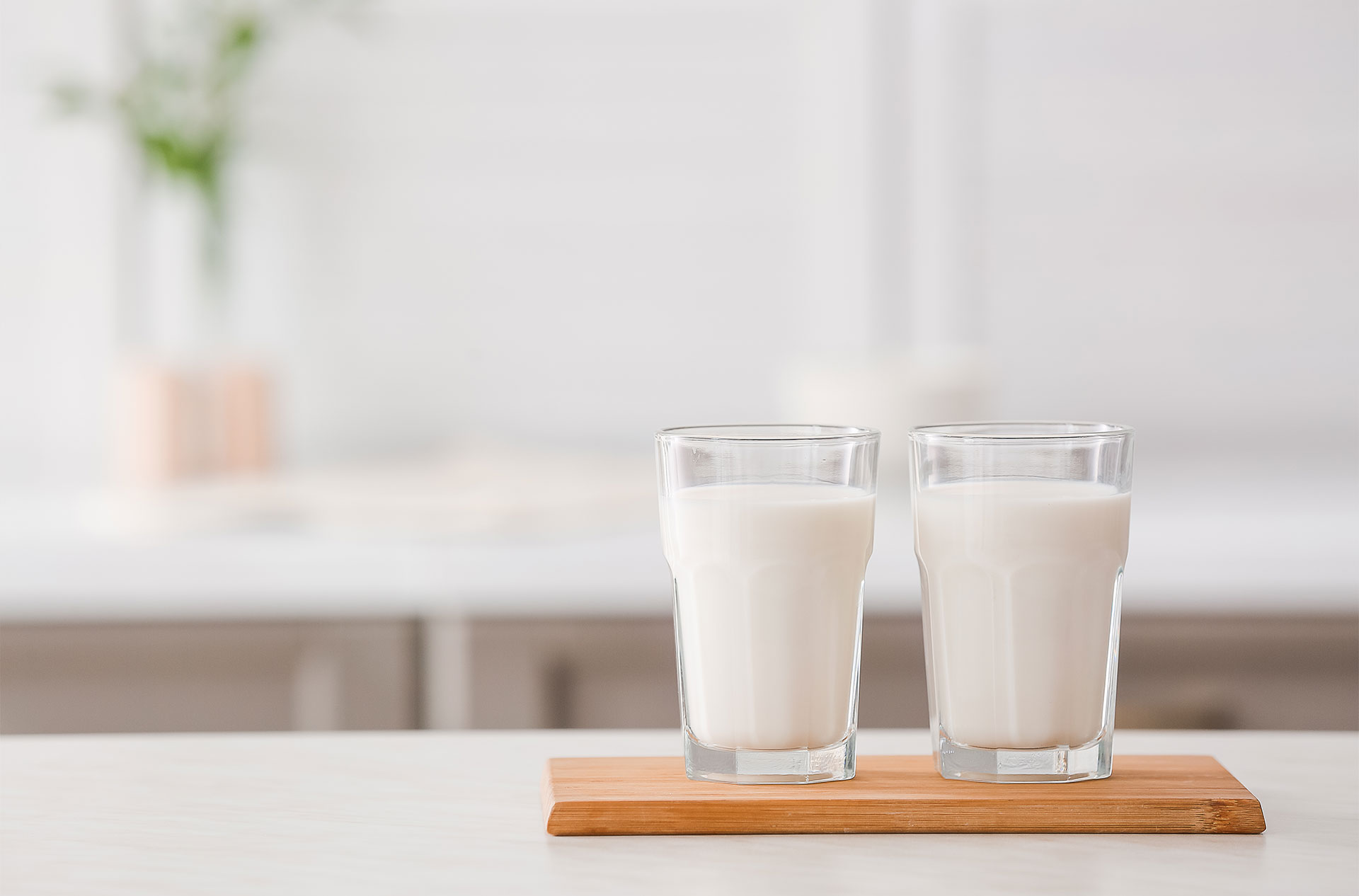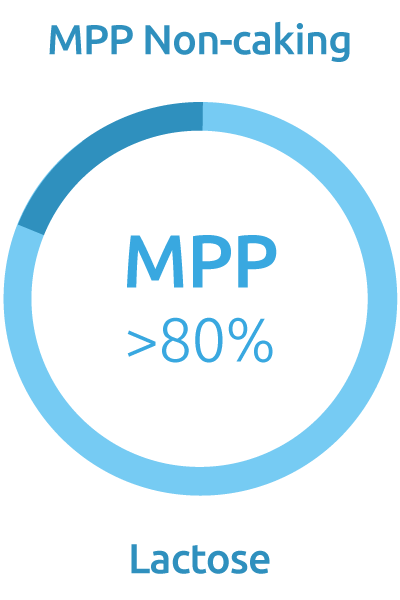It is no surprise that almost every country eat dairy products. It is tasty and healthy since it contains high quality proteins, vitamins, and minerals as calcium.
Milk and dairy products are broadly recommended as part of healthy eating patterns. Their key role in human nutrition, health and development throughout life is generally attributed to their nutrient richness.
As a result, industries worldwide develop various milk protein ingredients to meet consumer demand. A market that will likely expand in the coming years as the world’s population rises. The main milk-derived proteins are discussed below.
Milk proteins, since their origins
Beginning in the early 19th century, researchers, including J.J. Berzelius, H. Schubler, and H. Braconnot uncovered interesting properties of milk proteins. In 1885, J. Sebelein separated the proteins found in whey proteins (or serum proteins) into soluble in water (albumin) and insoluble (globulin) fractions. The earliest description of the process of extracting milk proteins using acid precipitation was written by J.G. Mulder in 1938. Casein was the name given to the protein that precipitated an acidic environment. In the same year, S.J. Rowland identified two more classes of proteinaceous compounds present in milk: proteose peptones and non-protein nitrogen² .
Milk’s protein concentration ranges from 1% to 20% depending on the species, which reflects the neonate growth rate and the need for essential amino acids. There are two types of protein found in milk, and although both caseins and whey proteins are present in every milk, the proportions may vary significantly. Human and bovine kinds of milk are on opposing extremes of the spectrum: human milk contains a casein:whey ratio in a range of 29:71-33:67 (g/L), while bovine milk has a ratio of 82:18 (g/L)² .
The two principal milk-specific whey proteins, beta-lactoglobulin and α-lactalbumin have structural and physiological similarities across species2 . Caseins, and particularly the αcasein fraction, exhibit more variation, indicating that species-specific adaptations to structure and physiology are possible² . This article will focus on bovine milk proteins.
Caseins, the slow digesting protein
Caseins constitute around 80% of the total protein content of bovine milk. About 38%, 10%, 35%, and 12% of total bovine casein are αs1-, αs2-, β-, and κ-caseins type² . Casein molecules are associated together by protein-protein interactions (hydrophobic, hydrogen, and electrostatic binding) and also by the presence of calcium and phosphate to form casein micelles. When light hits these casein micelles it causes the light to refract and scatter resulting in milk appearing white.
Casein micelles are in a dynamic equilibrium with the aqueous phase of the milk because the κ-casein located at its surface confer it a negative charge and stability due to electrostatic repulsion and steric hindrance4.
During acidification, the hairy layer of κ-casein collapses. Consequently, the steric stabilization of casein micelles diminishes and, as a result, micelles exhibit attractive interactions: they aggregate and curdle .
Consequently, in acidic environments like in the stomach, they aggregate of casein micelles will decrease the speed of the gastric emptying5 . That’s why caseins are called “the slow digesting proteins”.
This slow-digesting pattern is associated with increased satiety and a longer digestion time, with a corresponding reduction in the rate of amino acid absorption and subsequent arrival in the blood circulation7 . Athletes utilize casein as a bedtime supplement because it helps lengthen the anabolic window while they sleep7.
The fast-acting whey proteins
Whey protein accounts for about 20% (6.3 g/L) of the total proteins. It consists of approximately 50% ß-lactoglobulin, 20% α-lactalbumin, blood serum albumin, immunoglobulins, lactoferrin, transferrin, and many minor proteins and enzymes. Whey proteins contain a large amount of sulfur-containing amino acids. These form disulfide bonds within the protein causing the chain to form a compact spherical shape. The disulfide bonds can be broken, leading to loss of compact structure, a process called denaturing. Denaturation is an advantage in yogurt production because it increases the amount of water that the proteins can bind, which improves the texture of yogurt. This principle is also used to create specialized whey protein ingredients with unique functional properties for use in foods.
With the confluence of multiple research fields in the late 1990s, whey protein gained attention for its high protein quality since it was recognized to play an important role in muscle proteins synthesis. Compared to caseins, whey proteins are rapidly absorbed and they result in a fast increase in plasma amino acids. Also, they contain a high amount of leucine, which play a key role in triggering the protein synthesis. Thus, whey proteins are ideal for sport and medical nutrition products, where the objective is to reduce muscle protein breakdown and stimulate its synthesis.
Minor milk proteins: the hidden gems
Milk contains several minor proteins, some of which are physiologically active and hence have garnered a lot of interest as potential nutraceuticals (or functional food or nutritional supplement)2 . Metal-binding proteins, β2-Microglobulin, vitamin-binding proteins, angiogenins, and kininogen are all examples2 .
Among the metal-binding proteins, it is worth mentioning lactoferrin, an iron-binding glycoprotein found in almost all secretory fluids such as tears, saliva, and bile12. In addition to improving the bioavailability of iron, lactoferrin has a wide variety of host defenserelated bioactivities: it is bacteriostatic and has antioxidant, antiviral, anti-inflammatory, immunomodulatory, and anticarcinogenic activity13 .
Past studies have shown that lactoferrin has a bacteriostatic action against intestinal pathogens such as Escherichia coli, Helicobacter pylori, and Vibrio cholerae. With its ironbinding capability and ability to attach to the bacterial cell wall, lactoferrin effectively starves bacteria of a vital nutrient such as iron14 .
This article summarized the most important milk proteins present in bovine milk. However, the big picture is much more complex than this. Different types of milk provide different types of proteins in different ratios and with different functional benefits. Milk is a nutrient-dense food, and its benefit is provided by a complex mix of proteins, fats, carbohydrates, vitamins, minerals, and bioactive compounds that make up milk’s matrix.
References:
1. Lagrange V. et al. 2015 J Food Sci; 80, A16–A22.
2. Goulding D.A. et al. 2020 Milk proteins; 21-98.
3. Walstra P. et al. 2005 CRC press.
4. Broyard C et Gaucheron F.2014. Dairy Sci. & Technol. (2015) 95:831–862 DOI 10.1007/s13594-015-0220-y
5. Holt C. et al. 2013 J Dairy Sci.;96(10):6127-6146. doi:10.3168/jds.2013-6831
6. Lacroix M. et al. 2006 Am J Clin Nutr.;84(5):1070-1079. doi:10.1093/ajcn/84.5.1070
7. Hartman J.W. et al. 2007 Am J Clin Nutr.;86(2):373-381. doi:10.1093/ajcn/86.2.373
8. Krissansen G.W. 2007 J Am Coll Nutr.;26(6):713S-23S. doi:10.1080/07315724.2007.10719652
10. Tang J.E. et al. 2009 J Appl Physiol;107(3):987-992. doi:10.1152/japplphysiol.00076.2009
11. Saxton R.A. and Sabatini D.M. 2017 Cell;168(6):960-976. doi:10.1016/j.cell.2017.02.004
12. Baker E.N. and Baker H.M. 2005 Cell Mol Life Sci.;62(22):2531-2539. doi:10.1007/s00018-005-5368-9
13. Lönnerdal B. 2009 Curr Opin Clin Nutr Metab Care.;12(3):293-297. doi:10.1097/MCO.0b013e328328d13e
14. Conneely O.M. 2001 J Am Coll Nutr.;20(5 Suppl):389S-397S. doi:10.1080/07315724.2001.10719173














